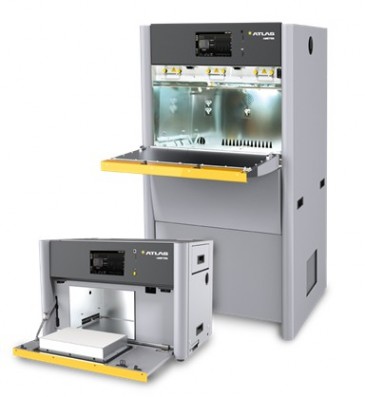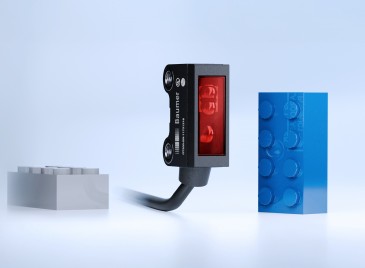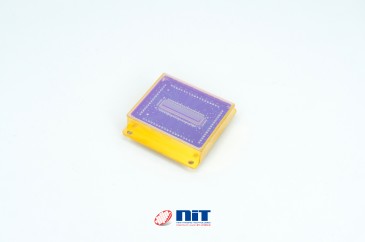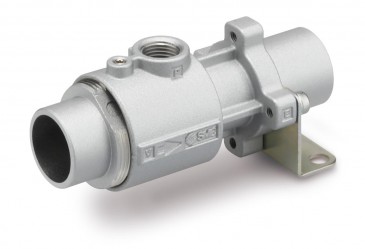
History has a way of teaching those who are willing to listen. Observing how others are dealing with and reacting to events provides data to ensure that the best decisions are made in real-time when faced with uncertainty. Establishing a strong core foundation ensures security in troubling times. All these factors have aligned when reviewing how FRAMOS reacted and managed during the first wave of COVID-19 pandemic and how its strategy, moving forward, are looking positive. Having a strong management team with broad experiences, utilizing both a diplomatic and sympathetic approach to decision making while leveraging strong core values were all integral in FRAMOS’s success throughout this ordeal.
Anticipating lockdown mode
When news started coming out of Wuhan, China, about a mysterious illness affecting its population, the world mostly watched from the sidelines not anticipating the seriousness of what was about to come. It was not until this virus reached Europe that it became apparent how infectious it was and how difficult it was to contain. And, it was around this time, in January 2020, that the team at FRAMOS was starting to see how the worldwide supply chains were being affected and started making plans to mitigate its effects on its customers’ orders. With the help from strong partners like Vimos, they were able to source and acquire products out of Asia quickly before borders closed and caused shipment delays. A COVID-19 response team was formed to decipher the changing global situation and its impact on all aspects of the company, and to start executing plans for the arrival of the virus.

Italy was first and hardest hit by the virus upon its arrival into Europe. The FRAMOS team analyzed how the Italian governments were combatting the spread of the disease combined with data from local employees on how they were being impacted. This information helped shape strategies and plans that would be implemented throughout the various other offices worldwide. It seemed that many governments shared the same strategies in dealing with COVID-19 containment so one could anticipate their course of action. With this knowledge, FRAMOS was able to prepare the offices and ease the fears of their employees with well thought out plans for working from home. For those that still required to be in the office, protection equipment and cleaning procedures were implemented quickly to ensure the safety of essential staff while they continued to build products and ship them to customers in need. Offices in regions not yet impacted by the Coronavirus did not wait for official orders to close. They had plans in place to have employees working from home sooner than ordered giving them time to gather both the necessary equipment from their desks and make their new home offices more productive while maintaining business levels throughout.
FRAMOS CEO, Andreas Franz said, “The team and our core values, specifically our Fail Forward value, helped with trying ideas in specific regions to see how they worked and using that knowledge to apply them in other regions. Plans that worked in Italy were then applied to the other European and NA offices.”
Leveraging its global workforce and strong core values allowed FRAMOS to test plans locally which could then be used globally. Information was freely shared around the company as to how each region was dealing with effects of the virus and lockdowns to help others prepare, anticipate, and plan for the virus’ ultimate arrival in their regions.
It was decided to build up inventories to ensure adequate supplies for customers should a prolonged lockdown cause severe supply chain delays. All hands were on deck working with clients to understand their short term and midterm needs and, in some cases, acquire parts at much higher costs to maintain supplies and ensure that their production lines stayed running. Many of these additional costs, for example, purchasing items in high demand, carrying higher than normal inventories, and protection equipment were absorbed by FRAMOS and not passed along to their customers. It was important to FRAMOS to maintain our strong relationships with clients globally by supporting existing commitments in these trying times. Their ”Customer First” mentality was exemplified on many occasions early on in this crisis.
Managing while in lockdown
As each office was hit by the pandemic and began lockdown procedures, FRAMOS’s COVID-19 team was already in action preparing each location for social distancing and working from home. Little did they know at the time that much of their planning had been done years ago.

The first step on the checklist was to ensure that everyone was able to work safely, wherever they needed to be. The primary focus was to keep as many people working from home as possible. This was achieved easily through an advanced corporate IT infrastructure. It had been decided several years ago to move all servers, data, and tools to cloud based versions whenever possible. Tools like Microsoft 365, especially MS Teams, allowed for easy collaboration and data sharing between offices and personnel while on the road but were now being leveraged to enable home offices and keep work flowing during the lockdown. This was enough for most employees to continue working and stay in contact with others in the company. With a simple headset, people were able to make and receive phone calls from customers and suppliers in the comfort of their homes without the external world knowing that anything had changed. More meetings were moved online with people being more aware of their office backgrounds, pets, and kids. It was a human side that was not as visible as before but a welcome change as everyone adjusted to the everchanging situation.
Not everyone was able to be fully productive in a home office environment. The engineering team, who were most affected by working from home, pivoted their creativity from building products to staying productive in isolation without the necessary tools and servers needed to do their tasks.
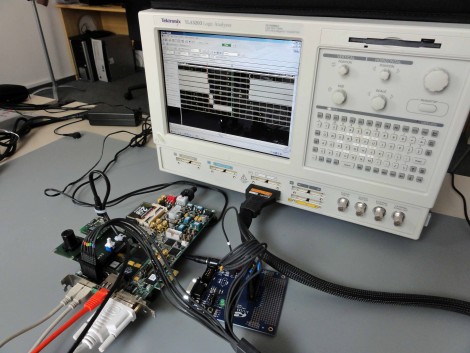
Where it was possible, extra equipment was purchased to allow for individual use at home. In other cases, dedicated computers were created and setup in the office that could be remotely accessed via VPN connections to utilize applications and compilers that were run on local servers. It was not quick for them to migrate from working under these new conditions but all was accomplished within two weeks. Server times were scheduled for those who needed them and office time was managed to ensure that social distancing was respected at all times. Work activities that could only be done onsite was managed and procedures were in place to sanitize after each visit. In the end, with all the mitigation factors and lost time for home office setup, “… overall productivity only suffered by 7% as everyone worked around schedules and new procedures in this challenging time”, says Damir Dolar, Head of Embedded Engineering.
Some employees could not work from home due to the nature of what they do. There were cases where people needed to be in the office on a regular basis such as shipping and receiving, operations and production personnel. Of critical importance was to ensure their safety while they worked. The plan here was to maintain social distancing by minimizing the required staff and adding shifts throughout the day to maintain daily outputs with overtime being approved when necessary in a bid to maintain overall production quotas. Workstations and common areas were cleaned and disinfected in between shifts. Staff were kept, as much as possible, to their work areas during their shifts and were provided gloves and masks for their protection. Priority and focus were on products needed for customers who were deemed essential.
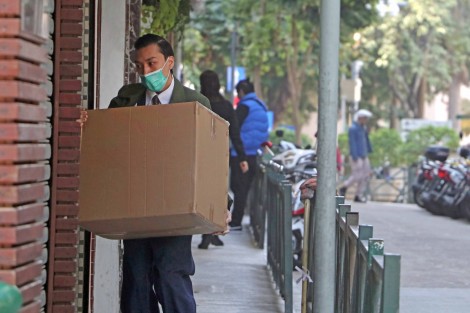
To further minimize exposure from possible infection, all couriers were coordinated to picking up and delivering products and supplies one day per week. The drivers entered a restricted area within the warehouse to drop off and pickup boxes while avoiding any contact by a FRAMOS employee. All incoming deliveries were then quarantined for a minimum of 24h before they were processed and their contents placed into inventory. Making these efforts additionally challenging was increased levels of business for this department as more deliveries were arriving as FRAMOS’s inventory levels increased.
Most surprising was that many of FRAMOS’s customers were deemed essential and thus were able to continue operations. Camera development worldwide was still being done which meant they needed both supplies and continued support to maintain project timescales for completion. Every effort was made to ensure that these customers had what they needed to maintain their production lines between shifts. Ron Low, Director of Sales in NA, “We are still experiencing a positive book to bill while business levels continue in an upward direction after strong performance in Q1’20.” This positive news shows the Vision Market is still strong despite many worldwide markets dropping during the global pandemic. It also confirms that current downturns may be short lived and will recover more quickly once quarantine measures are lifted.
The path to recovery
Many signs seen prior to and during the lockdown are suggesting that the recovery might come sooner for those companies working in the various Vision and Imaging Markets. History shows that during past pandemics, markets crashed while people were dealing with illnesses. As herd immunity increased and people showed signs of recovery pushing markets up temporarily until the next wave of infections hit, crashing markets again. However, in each instance, markets rebounded more than ever once people were immune and the infections were no longer spreading. It is hard to predict if this pattern will repeat but it appears to be tracking along a similar course. The race to create a vaccine against COVID-19 will be key to how quickly markets, companies and people recover, and things got somewhat back to normal. Lorenzo Cassano, CEO with Mavis Imaging, says “Customer survival will be dependent on their financial capabilities and how innovative and receptive they are to adapting and accepting change. They need to be adaptable, flexible while having a strong innovative DNA.”
The main challenge to the vision Industry could be the lack of live tradeshows. Many of these events are going virtual this year.

This is great as it will still provide an event where everyone can “face time” with each other. It will present challenges due to people living in different time zones worldwide such that a tradeshow normally in California will be difficult to virtually attend by someone in Japan as the show times for them would happen at night. Having everyone in the same time zone makes it much easier to schedule meetings and visits. Another challenge might be actual “foot” traffic at the show. How many companies who are looking for products will attend and see all the booths showing products they may be interested in? How do you draw someone’s attention in a virtual environment? Part of being at a live show is browsing the aisles and seeing new companies that have interesting products. Also, for those working the booths, it is a chance to “pull” people off the aisle to chat and maybe generate leads that would have just walked on by. It is a chance to see old faces and catch up on life and scout out what is new in the industry. Face to face meetings have much more value when you can read body language and gauge interest to better ensure that both parties are interested and not just “window shopping”. These virtual shows are further compounded by the current challenges with internet bandwidth. It has already been seen in online meetings and chats that connections drop temporarily, mid conversation or the audio gets corrupted. Many of these internet platforms have not been fully exercised to the extent as they will in the coming months. It will be a real test of how well they have been designed to handle the volume of traffic that will be hitting their servers. With that said though, “Live conferences will never go away entirely. People still want to meet face to face because of the need for human interaction in business and have questions answered from FRAMOS experts there is no virtual way to replacing that yet!”, stated Mr. Low.
Given this, the short-term path will focus on existing customers who have immediate needs. Part of this strategy will be to “to find and retain longer lasting customers and bolstering our tech skills to support them will ensure that we continue to stay strong moving forward”, proclaimed Mr. Franz. Vision is still a large market and is still growing exponentially so the opportunities are out there. This cannot be said for other markets as it could be 2-3 years before they see recovery to past levels. At this time, FRAMOS’s day-to-day has not really been impacted by the pandemic. As Chris Barrett, Chief Product Officer, points out “… FRAMOS is in a market that is well diversified so is less impacted by the pandemic. Business will continue as it has historically.”
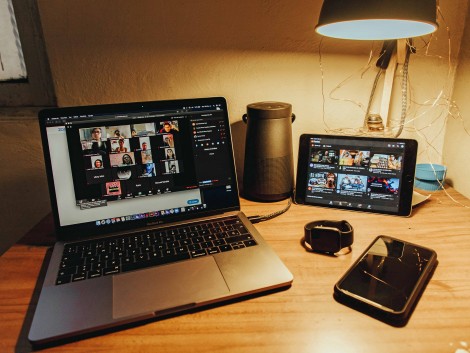
The sales team has had a lot of success travelling to visit with customers. This will change moving forward as the travel industry will need to accommodate for proper social distancing. This will potentially drive up costs for travel which in turn will limit who will go and only when it is justified to do so. The main factor that will influence how quickly this area returns to normal will be a global vaccine against the Coronavirus. It could take 5-6 years before travel returns to past levels without a vaccine in place. People will not feel comfortable traveling in tight spaces or waiting in lines to board planes and trains. Face to face meetings will be aborted for conference calls and Zoom™ chats which will be easier to schedule between parties. Positively, all this time lost travelling can now be leveraged for more productive activities which has already been seen so far as FRAMOS has pivoted to successfully maintaining business relationships while growing during the pandemic. What will set FRAMOS apart in this new world will be its unique DNA, utilizing a mix of Machine Vision experiences, optics experts, embedded vision software knowledge, image quality and tuning experience, its partner and supplier ecosystems, sales FAEs and marketing support that no one else can do, globally. All these factors will be leveraged and put to the test to secure existing customers and win new ones as part of a winning strategy to recover more quickly once the lockdowns are eased.
Plans for continued growth and larger global reach
The COVID-19 pandemic was felt worldwide and hit without discretion. Companies needed to prepare and execute quickly to ensure that their staff was safe while maintaining business continuity. Those who will recover more quickly will have solid action plans on getting their people working effectively again in the new environment while respecting local and global restrictions put in place to curb the spread of the virus. Having a strong foundation, built on good core values and a democratic management style have benefited FRAMOS in their management of this crisis and their recovery plans. Their outlook post-pandemic is positive with plans for continued growth and larger global reach moving forward. Their “Fail Forward” and “Customer First” core values were exemplified on numerous occasions during the time leading into and during the lockdowns which allowed both their staff to quickly react and ensure timely deliveries of products and supplies to their customers while maintaining business levels and commitments to both our suppliers and partners globally. For these reasons, it appears that they are prepared for the next phase in the pandemic and will do whatever it takes to ensure that they continue to service their customer needs.
Written by Darren Bessette,Product Marketing Manager at FRAMOS GmbH.































 Back to Blog
Back to Blog